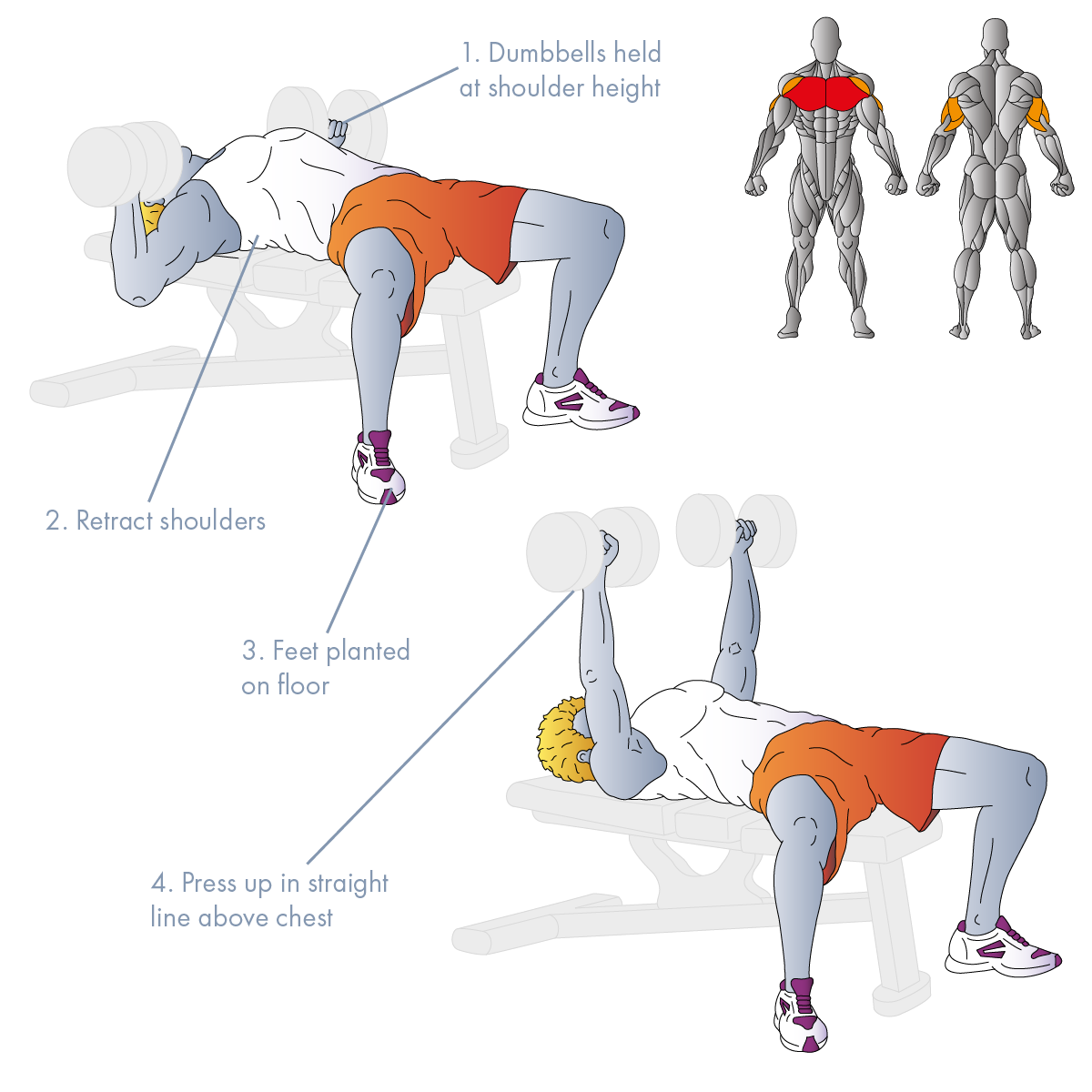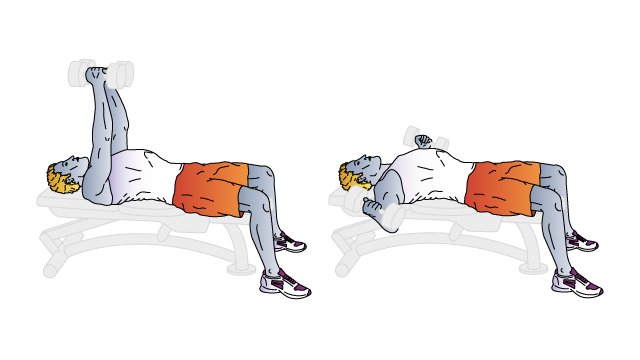FLAT BENCH DUMBBELL PRESS

Many people incorrectly believe the Dumbbell Press to be the inferior counterpart to the classic staple of resistance training the Barbell Bench Press simply because you cannot use as much weight. However, apart from the fact that the load you lift is not everything, the Dumbbell Press does offer several advantages over the barbell variant including 1) fewer joint consequences at the shoulder since you are better able to angle this joint at a superior biomechanical angle, 2) a greater potential to safely train to failure since the dumbbells can be easily dropped to the sides compared to being pinned under the bar, 3) it provides a means for unliteral training to promote independent motor control and thereby increases your awareness of any strength mismatches between each side of your chest, and 4) it allows for a greater range of motion, meaning that you can work your chest muscles more.
Skill Level: Intermediate
Training: Strength
Type: Compound
Force: Push
Equipment: Flat bench, Dumbbells
1° Muscles: Pectorals
2° Muscles: Triceps, Deltoids
SET-UP
- Sit at the end of a flat bench holding an upright dumbbell on each knee.
- Lie back on the bench whilst lifting your left knee and then your right knee to assist in raising the dumbbells into position so they are held at shoulder height.
- Rotate your palms so they face your feet.
EXECUTION
- Inhale as you slowly press the dumbbells in a straight line above your chest by extending your arms.
- After a brief pause, exhale as you slowly lower the dumbbells in the same straight line back up to the start position.
- Repeat for the prescribed number of reps and sets.
- If you initially find the Dumbbell Press is too challenging on a flat bench, try performing it on a decline bench. This regresses the exercises because the decline angle reduces the distance you need to press the weight.
- If you experience discomfort in your shoulders use a neutral grip where your palms face each other.
- The tempo of the exercise is important. It should be should slow enough to force you to control the weight on the way down. A good tempo should involve taking twice as long to lower the weight as it does to raise it.
- At the top of the lift bring the dumbbells close together but avoid letting them touch and also avoid locking your elbows as this will take the pressure off your muscles making the exercise less effective.
- Do not let the dumbbells drift forward; they should be pressed and lowered in a vertical straight line.
- Focus on using your chest muscles as you push the dumbbells up, and at the top of the lift squeeze them.
- So long as you have sufficient joint mobility and muscle flexibility use the full range of movement for this exercise by taking the dumbbells just past shoulder height at the bottom of the lift.
- Keep your feet firmly planted on the floor for stabilization.
- Whilst a degree of arching of your back is desirable, especially when using heavier weights, avoid hyperextending it by allowing your hips to come off the bench. Both your shoulder blades and glutes should remain in contact with the bench throughout the entire exercise.
- Flat Barbell Bench Press
- Dips/Weighted Dips
- Push Ups








